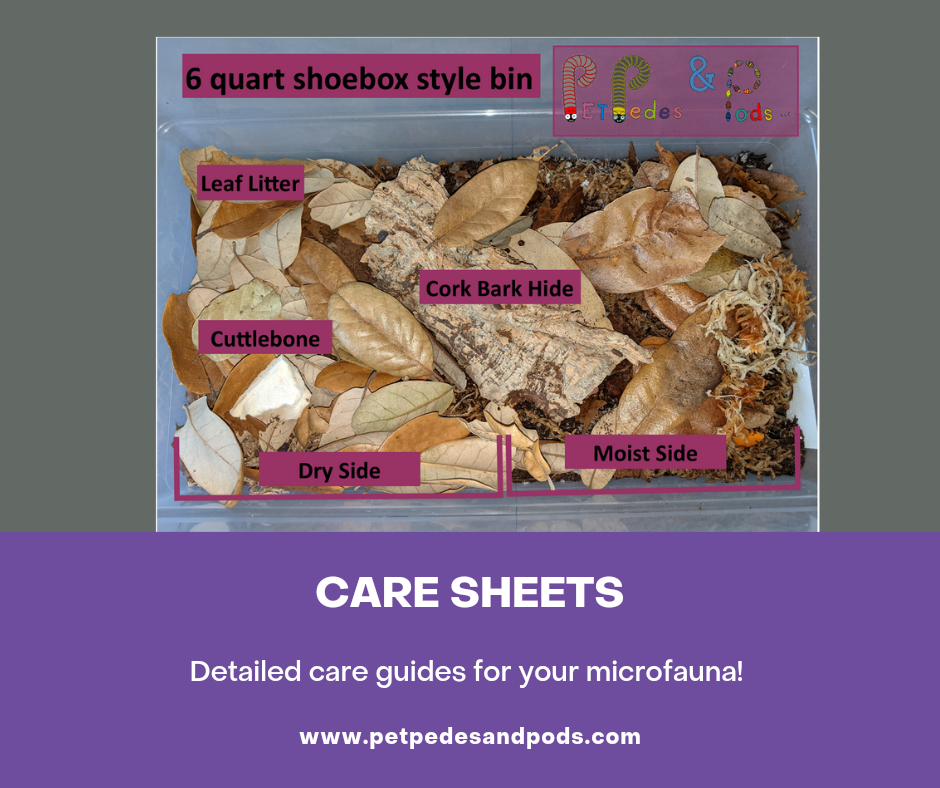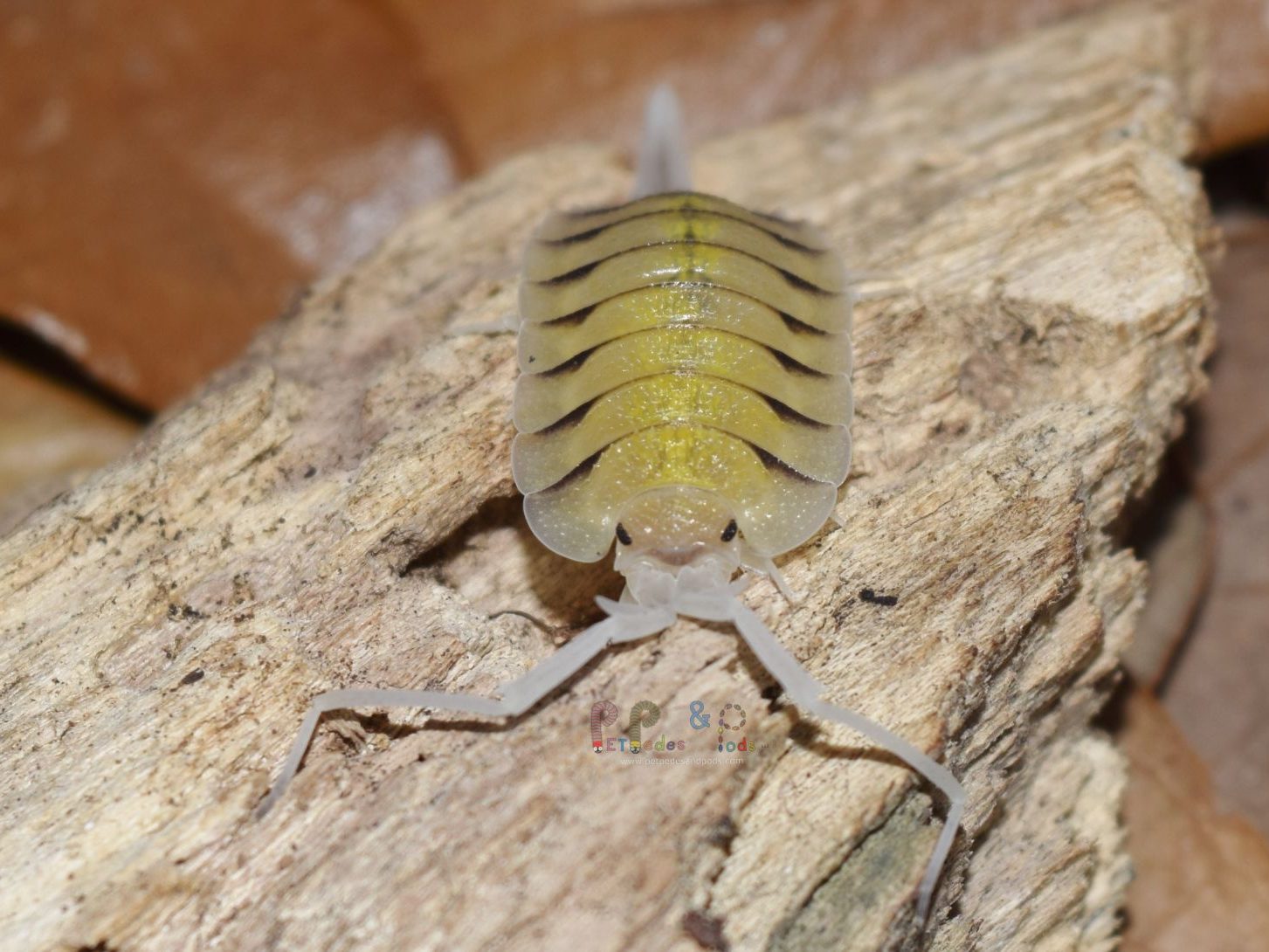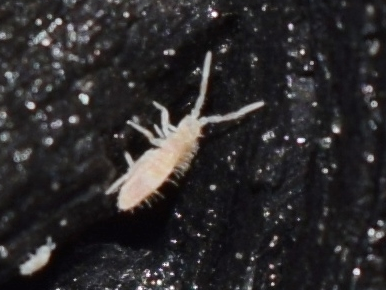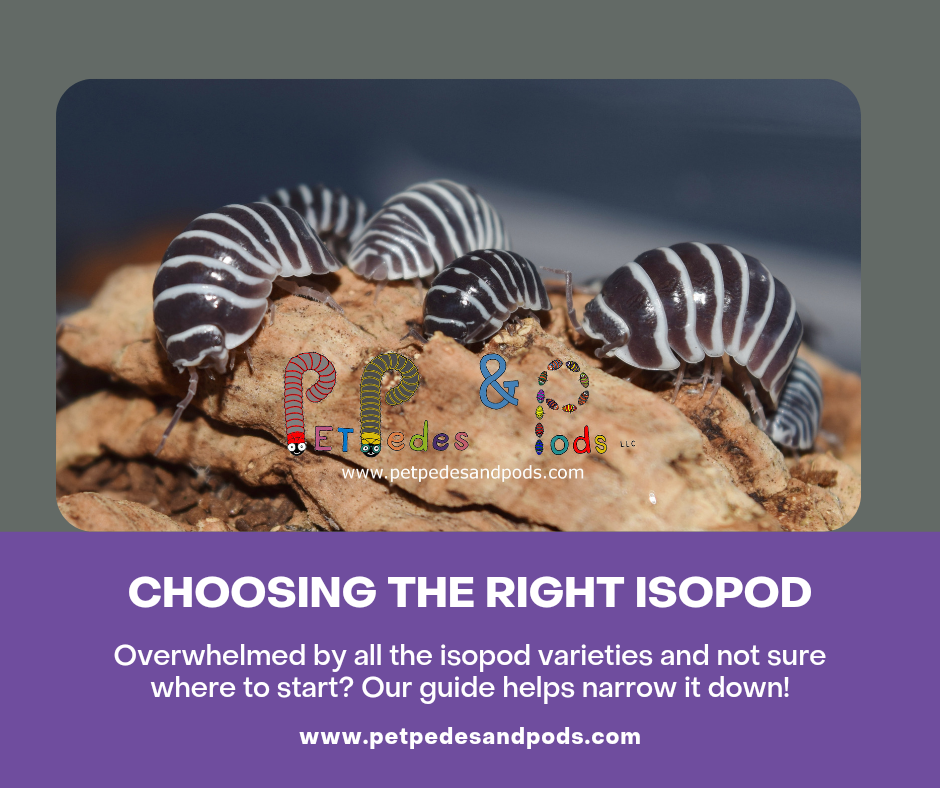I just need a basic clean up crew
First and foremost, I always recommend using both springtails and isopods for clean up crews. The springtails will control mold and fungus and outcompete mites and fungus gnats, and the isopods will efficiently break down larger waste. We offer several clean up crew bundles, so be sure to take a look at our discounted specials and bundles if you are shopping for both isopods and springtails.
If you want a type of isopod that will spend most of its time buried in the substrate, or if you have a primary inhabitant that will eat anything that moves, dwarf isopod varieties are a great choice. They are good utility cleaners that spend most of their time in the substrate and avoid being noticed by either you or the primary inhabitant(s).
Porcellionides pruinosus are excellent tank mates, tolerant of a wide range of conditions from arid to high humidity, and fast producers. They even come in a range of colors! They are my favorite isopod for clean up crews.
If you are looking for a type of isopod that will multiply and take over a large enclosure quickly, then Porcellio laevis or Porcellionides pruinosus are excellent choices. Porcellio laevis are large, protein hungry isopods, so they should not be used as cleaners for other invertebrates, and care should be taken to keep them well fed when using them as cleaners. They are excellent cleaners for large animals such as monitors and snakes.
Porcellio dilatatus (Giant Canyon) and Porcellionides pruinosus are more tolerant of arid conditions, as long as they have some moist areas to retreat to.
Porcellionides pruinosus and Cubaris murina are great choices for high humidity environments.
Porcellio scaber, Armadillidium vulgare, Armadillidium nastatum, Armadillidium maculatum, Onsicus asellus, and Cubaris murina are also all good choices for basic clean up crews. Porcellio scaber does not multiply as quickly as Porcellionides pruinosus or Porcellio laevis, but does multiply faster than the Armadillidium species. All of these species multiply faster than Cubaris species.
If you have any concerns about your primary inhabitant(s) snacking on your clean up crew, I always recommend setting up a separate culture (a plastic shoebox bin works great) for your isopods and moving them into your bioactive enclosure as needed.
As an added bonus, any of the isopods mentioned in this section are by definition beginner friendly, as any isopods used for clean up crew are easy to breed and maintain.
I am looking for something to use in a plant only terrarium with no other inhabitants
If you have a small decorative terrarium (a closed terrarium for example) and you just want something to control mold and fungus growth, springtails or dwarf isopods might be all you need. If you’re looking to add some interest, Porcellio scaber, Armadillidium vulgare, Armadillidium nastatum, Armadillidium maculatum, Onsicus asellus, and Cubaris murina are all great hardy and inexpensive choices. They’re also great for beginners due to their hardiness and ease of care.
Keep in mind that the isopods may nibble on your plants if they don’t have adequate other food sources, so make sure you provide them with leaf litter and some protein sources. If you have particularly delicate or rare plants, avoid using isopods. If you have a totally closed terrarium that you never plan on opening, using springtails is probably your best option as you won’t need to provide them with additional food sources.
If you’re looking for an isopod to proudly display in an enclosure, Armadillidium maculatum (Zebra) are my number one recommendation for a display species. They are fairly large, surface active, and very pretty.
I am a beginner keeper
Any of the isopods mentioned before this section are hardy and easy to care for, which is also what makes them great clean up crews. These are all great for beginners! Other “fancier” species that may cost a bit more, but are still hardy and forgiving for beginner keepers are Cubaris murina “Papaya,” any Armadillidium vulgare color morphs such as “Magic Potion” or “Punta Cana,” Cubaris Panda King, Red Panda, Shiro Utsuri, and PhiPun Tigers.
I am a collector/experienced keeper
Take a look at our exciting Cubaris varieties, large Porcellio species (hoffmannseggi, bolivari, expansus, magnificus), Armadillidum klugii, or any of our fun color morphs of the more common species.
Related Links




